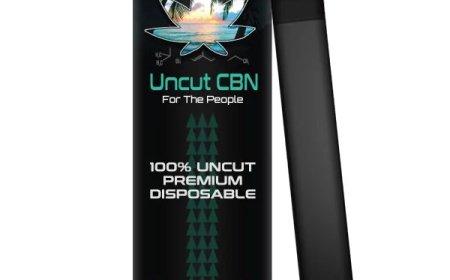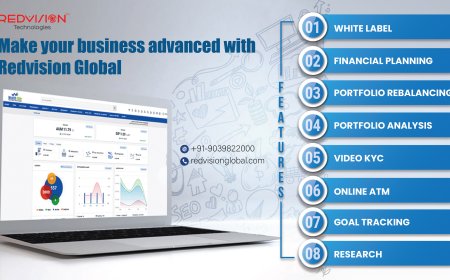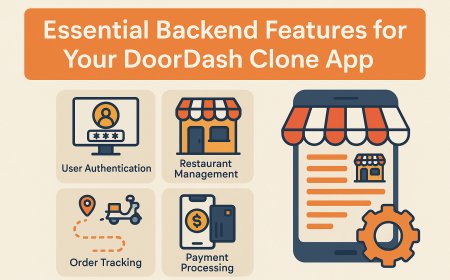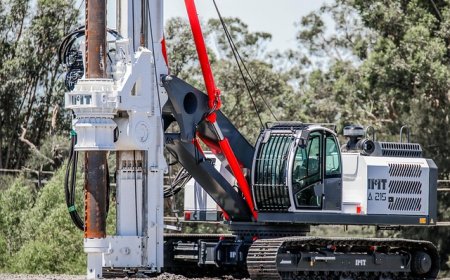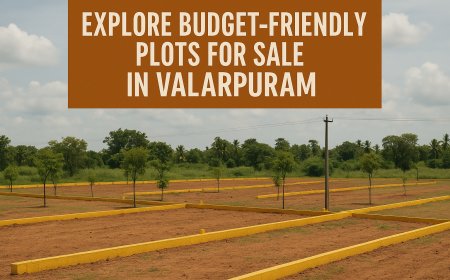How to Create Landing Page
How to Create Landing Page A landing page is a standalone web page designed for one specific purpose: to convert visitors into leads or customers. Unlike a homepage, which serves multiple functions—navigating the site, showcasing products, and providing general information—a landing page is laser-focused. It eliminates distractions, guides users toward a single call to action (CTA), and is often t
How to Create Landing Page
A landing page is a standalone web page designed for one specific purpose: to convert visitors into leads or customers. Unlike a homepage, which serves multiple functions—navigating the site, showcasing products, and providing general information—a landing page is laser-focused. It eliminates distractions, guides users toward a single call to action (CTA), and is often the result of targeted advertising campaigns, email marketing, or social media promotions. Creating an effective landing page is not just about design; it’s about psychology, structure, clarity, and optimization. Whether you’re promoting a free eBook, a software trial, a webinar, or a product purchase, your landing page is often the first—and sometimes only—chance to make a compelling impression. In this comprehensive guide, you’ll learn exactly how to create a landing page that drives results, from foundational strategy to advanced optimization techniques.
Step-by-Step Guide
Step 1: Define Your Goal and Target Audience
Before you write a single line of copy or pick a color scheme, you must answer two fundamental questions: What do you want visitors to do? And who are they?
Your goal could be to collect email addresses, generate sales, schedule demos, or download a resource. Each goal requires a different approach. For example, an email capture landing page may prioritize a simple form with minimal fields, while a product sales page might include testimonials, pricing tiers, and a money-back guarantee.
Simultaneously, define your target audience. Are they small business owners looking for time-saving tools? Are they students seeking free study guides? Are they tech-savvy professionals evaluating enterprise software? Understanding their pain points, motivations, and language will shape every element of your landing page—from headlines to imagery to tone.
Use audience personas to guide your decisions. Create a brief profile: age, job title, challenges, goals, preferred platforms, and objections. This ensures your messaging resonates on a human level rather than sounding generic or corporate.
Step 2: Choose the Right Type of Landing Page
There are two primary types of landing pages: lead generation and clickthrough.
Lead generation landing pages are designed to capture information—typically names, emails, phone numbers, or company details—in exchange for something valuable: an eBook, checklist, free trial, demo, or consultation. These pages are common in B2B marketing and content marketing strategies.
Clickthrough landing pages are used to warm up prospects before sending them to a product page or checkout. These are often seen in e-commerce or app promotion campaigns. They provide context, build trust, and reduce friction before the final purchase decision.
Some landing pages combine both functions—capturing leads and guiding toward a purchase. Decide which type aligns with your campaign objective and structure your page accordingly.
Step 3: Craft a Compelling Headline
Your headline is the first thing visitors see—and often the only thing they read. It must immediately communicate value and relevance.
A strong headline answers the question: “What’s in it for me?” Avoid vague statements like “Welcome to Our Platform.” Instead, use specific, benefit-driven language:
- “Download Our Free 2024 Marketing Playbook and Boost Leads by 73%”
- “Turn 10 Minutes a Day Into a 6-Figure Side Hustle”
- “Get Your Free Website Audit—Discover 5 Hidden SEO Mistakes”
Use power words that trigger emotion or curiosity: “Free,” “Proven,” “Secret,” “Instant,” “Guaranteed,” “Limited.”
Test variations using A/B testing tools. Even small changes—like replacing “Learn How” with “Discover How”—can significantly impact conversion rates.
Step 4: Write Persuasive Subheadline and Body Copy
The subheadline expands on the headline, offering context and reinforcing the benefit. It should be concise—no more than one or two sentences.
Body copy should be scannable. Use short paragraphs, bullet points, and bolded key phrases. Focus on benefits, not features. Instead of saying “Our software has AI-powered analytics,” say “Our AI finds hidden opportunities in your data—so you make smarter decisions, faster.”
Address objections preemptively. If users worry about time commitment, say “Takes less than 5 minutes to get started.” If they’re concerned about cost, highlight “No credit card required” or “Free for 30 days.”
Use social proof strategically. Mention how many people have already benefited: “Join 12,000+ marketers who’ve doubled their email open rates.”
Step 5: Design a Clear and Visible Call to Action (CTA)
The CTA is the heartbeat of your landing page. It’s the button or link that tells users what to do next: “Download Now,” “Start Free Trial,” “Book Your Demo.”
Best practices for CTAs:
- Use action-oriented verbs: “Get,” “Start,” “Join,” “Claim,” “Unlock.”
- Make the button stand out with contrasting color (e.g., orange on blue).
- Ensure it’s large enough to tap on mobile (minimum 44x44 pixels).
- Place it above the fold and repeat it once or twice below the fold.
- Use directional cues: arrows, images of people looking toward the button.
Avoid generic phrases like “Submit” or “Go.” Be specific: “Download Your Free Guide” is better than “Submit.”
Step 6: Optimize Form Fields for Conversion
If your landing page collects information, keep forms as short as possible. Every additional field reduces conversion rates.
For lead generation, the sweet spot is 3–5 fields: name, email, and maybe company or job title. Only ask for what’s absolutely necessary to qualify the lead.
Use inline validation to catch errors in real time. Label fields clearly. Consider placeholder text that demonstrates the expected format (e.g., “example@email.com”).
For high-intent audiences, you can ask for more information—but always justify why. “Tell us your annual revenue so we can recommend the right plan” is more persuasive than “Please enter your revenue.”
Step 7: Use High-Quality Visuals and Media
Images and videos significantly impact engagement and trust. Use authentic, high-resolution visuals that reflect your product, service, or audience.
For B2B products, show the interface in use. For services, use photos of real people (not stock models) benefiting from your offering. Avoid generic clipart or low-res images.
Consider embedding a short explainer video (under 90 seconds). Videos can increase conversions by up to 80%, according to HubSpot. Ensure the video auto-plays without sound and includes captions.
Use icons to break up text and illustrate benefits visually. For example, a clock icon next to “Saves 10 hours per week” reinforces the message instantly.
Step 8: Ensure Mobile Responsiveness
Over 60% of web traffic comes from mobile devices. If your landing page doesn’t render perfectly on smartphones and tablets, you’re losing a majority of potential conversions.
Test your page on multiple devices using tools like Google’s Mobile-Friendly Test. Ensure:
- Text is readable without zooming
- Buttons are large and spaced for touch
- Images load quickly
- Forms are easy to fill with virtual keyboards
Use responsive design frameworks like Bootstrap or Tailwind CSS to ensure fluid layouts across screen sizes. Avoid horizontal scrolling at all costs.
Step 9: Improve Page Load Speed
Every second of delay reduces conversion rates by up to 7%. Google recommends pages load in under 2 seconds.
Optimize your landing page speed by:
- Compressing images with tools like TinyPNG or Squoosh
- Minifying CSS, JavaScript, and HTML files
- Using a content delivery network (CDN)
- Reducing the number of third-party scripts (analytics, chatbots, widgets)
- Enabling browser caching
Test your load time using Google PageSpeed Insights or GTmetrix. Aim for a score above 90 on mobile and desktop.
Step 10: Implement Tracking and Analytics
You can’t improve what you don’t measure. Install tracking tools to monitor how visitors interact with your landing page.
Essential tools:
- Google Analytics 4 (GA4) to track page views, bounce rate, and conversions
- Google Tag Manager to manage tracking codes without editing code
- Heatmaps (Hotjar, Crazy Egg) to see where users click, scroll, and drop off
- Conversion tracking pixels (Meta Pixel, LinkedIn Insight Tag) for ad campaign attribution
Set up conversion goals in GA4 to track form submissions, button clicks, or page redirects. This tells you whether your page is working—or where it’s failing.
Step 11: Run A/B Tests
Even the best landing page can be improved. A/B testing (also called split testing) lets you compare two versions of your page to see which performs better.
Test one variable at a time:
- Headline variations
- CTA button color or text
- Image vs. video
- Form length
- Placement of testimonials
Use tools like Google Optimize, Unbounce, or VWO to run tests. Run each test for at least 1–2 weeks or until you reach statistical significance (usually 95% confidence level).
Don’t stop testing. Optimization is an ongoing process, not a one-time task.
Step 12: Launch, Monitor, and Iterate
Once your landing page is live, monitor performance daily. Look for:
- High bounce rate? The headline or visual may be misleading.
- Low form submissions? The CTA or form fields may be unclear.
- High exit rate after scrolling? The value proposition may not be compelling enough.
Use feedback tools like Hotjar’s session recordings to watch how real users interact with your page. Are they confused? Are they clicking where the CTA isn’t? Are they scrolling past key sections?
Make iterative improvements. Even a 5% increase in conversion rate can lead to 50% more leads over time. Treat your landing page as a living asset, not a static webpage.
Best Practices
Keep It Simple and Focused
Every element on your landing page should serve the goal. Remove navigation menus, footer links, social icons, and unrelated content. Distractions kill conversions.
Use whitespace strategically. A clean layout with breathing room feels more professional and guides the eye toward your CTA.
Match Ad Messaging to Landing Page Content
If your ad says “Get 50% Off Today Only,” your landing page must reinforce that offer immediately. Discrepancies between ad and page create distrust and increase bounce rates.
Use consistent language, imagery, and offers. If your ad features a specific product image, use the same one on the landing page.
Build Trust with Social Proof
People trust other people more than brands. Include:
- Customer testimonials with names and photos
- Logos of well-known clients or partners
- Star ratings and review counts
- Case studies with measurable results
Authenticity matters. Avoid overly polished or generic quotes. Real quotes with specific outcomes are far more persuasive.
Use Urgency and Scarcity Ethically
Phrases like “Only 3 spots left!” or “Offer ends in 2 hours!” can boost conversions—but only if they’re true. Misleading urgency damages credibility and can lead to negative brand perception.
Use scarcity sparingly and truthfully. For example, “Join 2,000+ subscribers this month” is factual and effective. “Last chance!” without context is manipulative.
Ensure Accessibility
A landing page that isn’t accessible excludes a significant portion of your audience, including users with visual, motor, or cognitive impairments.
Follow WCAG guidelines:
- Use sufficient color contrast (4.5:1 minimum for text)
- Provide alt text for all images
- Ensure keyboard navigation works
- Use semantic HTML (proper heading hierarchy)
- Label form fields clearly
Accessible design improves user experience for everyone and can positively impact SEO.
Align with Your Overall Marketing Funnel
Your landing page should fit seamlessly into your broader marketing strategy. Is it part of a paid ad campaign? An email nurture sequence? A social media promotion?
Ensure consistency in branding, tone, and follow-up. After someone converts, what happens next? Do they receive a thank-you email? Are they directed to a welcome sequence? A well-connected funnel increases lifetime value.
Test Across Browsers and Devices
Chrome, Safari, Firefox, and Edge render pages differently. Test your landing page on all major browsers and operating systems. Pay attention to form rendering, font display, and button alignment.
Use cross-browser testing tools like BrowserStack or LambdaTest to simulate real-world conditions.
Tools and Resources
Landing Page Builders
If you’re not a developer, landing page builders make it easy to create professional pages without code:
- Unbounce – Best for marketers. Drag-and-drop editor, A/B testing, and integrations with major ad platforms.
- Instapage – Advanced personalization and dynamic text replacement for high-volume campaigns.
- Leadpages – Simple interface, great for beginners and small businesses.
- ClickFunnels – Ideal for sales funnels with multiple pages (not just single landing pages).
- Elementor (WordPress) – Powerful WordPress plugin for creating custom landing pages within your site.
Design and Asset Tools
- Canva – Create custom graphics, banners, and social assets quickly.
- Unsplash / Pexels – Free high-resolution stock photos.
- Icons8 – Free icons and illustrations.
- Coolors.co – Generate color palettes that match your brand.
- FontPair – Find complementary font combinations.
Analytics and Optimization Tools
- Google Analytics 4 – Free, essential for tracking traffic and conversions.
- Hotjar – Heatmaps, session recordings, and feedback polls.
- Crazy Egg – Visual analytics to understand user behavior.
- Google Optimize – Free A/B testing tool (discontinued in 2023, but alternatives like VWO or Optimizely remain).
- VWO – Enterprise-grade testing and personalization platform.
- GTmetrix – Detailed performance analysis and optimization suggestions.
Copywriting and Conversion Resources
- Copyblogger – Articles and courses on persuasive writing.
- Conversion.ai – AI-powered copywriting assistant.
- The Copywriter’s Handbook by Robert Bly – Classic guide to persuasive copy.
- “Influence: The Psychology of Persuasion” by Robert Cialdini – Essential reading on psychological triggers.
Templates and Inspiration
- Landingfolio – Curated gallery of high-converting landing pages.
- Awwwards – Showcases award-winning web design, including landing pages.
- Behance – Search for “landing page” to find design portfolios.
- Template.net – Download editable templates for various industries.
Real Examples
Example 1: HubSpot’s Free CRM Landing Page
HubSpot’s landing page for its free CRM is a masterclass in clarity and trust-building.
- Headline: “Free CRM Software—No Credit Card Required”
- Subheadline: “Manage your leads, deals, and customers—all in one place.”
- Form: Only 4 fields—name, email, company, phone.
- CTA: Bright green button with “Get Started Free”
- Trust signals: Logos of 100,000+ companies using it, testimonials, and a video demo.
- Mobile optimization: Fully responsive, fast loading, touch-friendly buttons.
Result: Massive lead generation with minimal friction. The page removes all barriers to entry while clearly communicating value.
Example 2: Dropbox Paper
Dropbox’s landing page for its collaborative document tool uses storytelling and visual hierarchy effectively.
- Hero section: Clean background with a short animated video showing the product in action.
- Headline: “Collaborate on documents without the chaos.”
- Body copy: Focuses on pain points—email threads, version confusion, scattered files.
- CTA: “Try it free” with a secondary option: “See how it works.”
- Visuals: Real screenshots of the interface, not mockups.
By showing the product solving real problems, Dropbox reduces perceived complexity and increases adoption.
Example 3: Slack’s Free Trial Page
Slack’s landing page is minimalist yet highly effective.
- Headline: “Slack brings the team together.”
- Subheadline: “Where work happens.”
- Form: Only email and password required.
- Trust signals: “Used by 10M+ daily active users.”
- Secondary CTA: “Watch a demo” with a play button icon.
Slack doesn’t overwhelm. It focuses on the emotional benefit—connection, efficiency, clarity—and lets the product speak for itself.
Example 4: SaaS Startup (B2B Example)
A hypothetical B2B SaaS company offering AI-powered email outreach uses:
- Headline: “Double Your Email Response Rate with AI-Powered Outreach”
- Subheadline: “Used by 800+ B2B sales teams to book 3x more meetings.”
- Body: Bullet points listing features as benefits: “Auto-personalize emails at scale,” “Track opens and replies in real time.”
- Testimonials: “We went from 8% to 27% reply rates in 3 weeks.” – Sarah K., Sales Director
- CTA: “Start Your Free 14-Day Trial”
- Trust: Security badges, GDPR compliance, and “No credit card needed.”
This page speaks directly to the target audience’s goals and objections, resulting in high conversion rates for qualified leads.
FAQs
What’s the difference between a landing page and a homepage?
A homepage serves as the main entry point to a website, offering multiple navigation options, product categories, and general information. A landing page is focused on a single goal—like capturing an email or driving a sale—and removes all distractions to maximize conversions.
How long should a landing page be?
There’s no fixed length. Short landing pages (under 500 words) work well for simple offers like free downloads. Long-form landing pages (1,000+ words) are effective for high-ticket items or complex services where trust and education are needed. The key is relevance—not length.
Do I need a domain and hosting for a landing page?
You can use landing page builders like Unbounce or Leadpages that host your page on their subdomain (e.g., yourpage.unbounce.com). But for branding and SEO, it’s better to use your own domain (e.g., yourcompany.com/offer). You’ll need hosting for that, but many builders integrate with your domain easily.
Can I use WordPress to create a landing page?
Yes. With page builders like Elementor, Divi, or Beaver Builder, WordPress becomes a powerful platform for creating landing pages. You can also use plugins like Thrive Architect or Elementor Pro for advanced features.
How do I drive traffic to my landing page?
Common channels include paid ads (Google Ads, Meta Ads), email marketing campaigns, social media posts, influencer collaborations, and organic search (if optimized for SEO). Always ensure your traffic source matches your landing page message.
How often should I update my landing page?
Update it whenever your offer changes, your audience evolves, or your data shows declining performance. Even if your page is converting well, test new headlines, CTAs, or visuals every 4–6 weeks to keep improving.
Can landing pages rank on Google?
Yes—if they’re optimized for search. Use relevant keywords in your title tag, H1, and body copy. Provide unique, valuable content. Avoid duplicate content. Link to your landing page from other pages on your site. With proper SEO, landing pages can attract organic traffic and generate leads without paid ads.
What’s the average conversion rate for a landing page?
Industry averages vary. Lead generation pages typically convert between 5% and 15%. E-commerce or sales pages may convert between 2% and 7%. Top-performing pages exceed 20–30%. Your goal should be to beat your own baseline through testing and optimization.
Should I use pop-ups on my landing page?
Generally, no. Pop-ups disrupt the user experience and often cause higher bounce rates. If you must use them, delay them until after the user has scrolled 50% or more, and make them easy to close. Consider exit-intent pop-ups instead—they trigger only when a user is about to leave.
What’s the most common mistake when creating a landing page?
The most common mistake is trying to do too much. Adding multiple CTAs, unnecessary links, or too many form fields dilutes focus and confuses visitors. Keep it simple. One goal. One message. One action.
Conclusion
Creating a high-converting landing page is both an art and a science. It requires strategic thinking, persuasive writing, clean design, and continuous testing. But when done right, a landing page becomes one of your most powerful marketing assets—turning casual visitors into loyal customers, subscribers, or advocates.
Start with clarity: know your goal and your audience. Build with purpose: every word, image, and button should serve your objective. Optimize relentlessly: test, measure, and refine. And never stop learning from your data.
The best landing pages don’t shout—they whisper the right message at the right moment, guiding users effortlessly toward the action you want them to take. Whether you’re a marketer, entrepreneur, or small business owner, mastering this skill will transform your digital campaigns and unlock measurable growth.
Now that you have the complete framework, take action. Build your first landing page today. Test it. Learn from it. Improve it. And watch your conversions rise.









